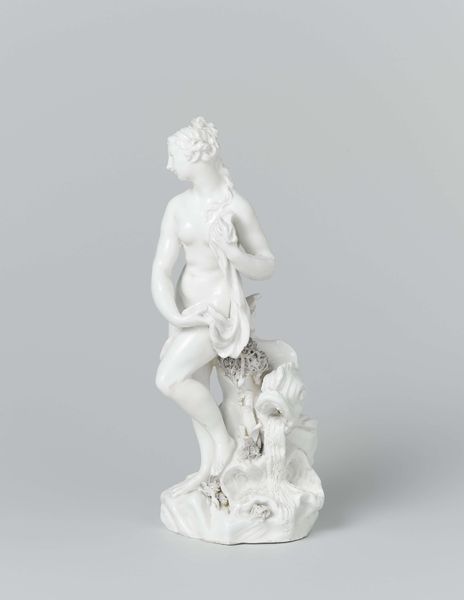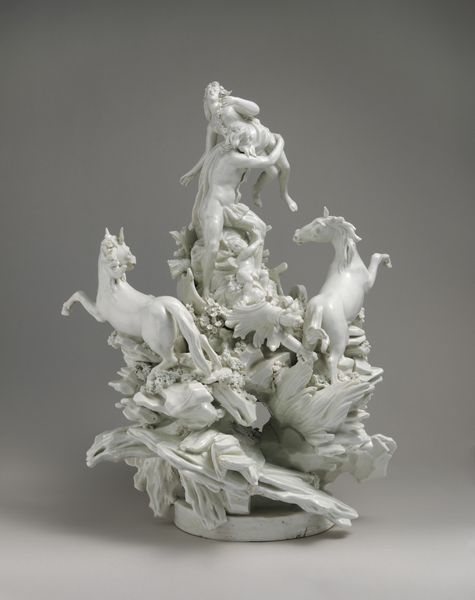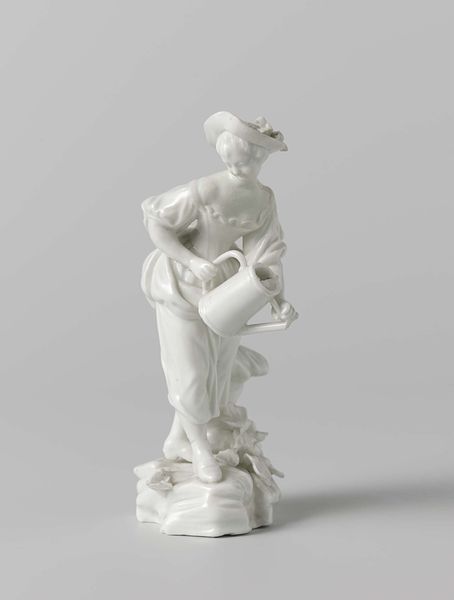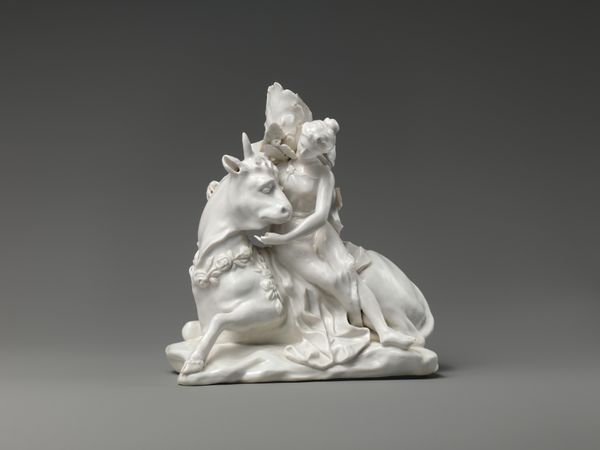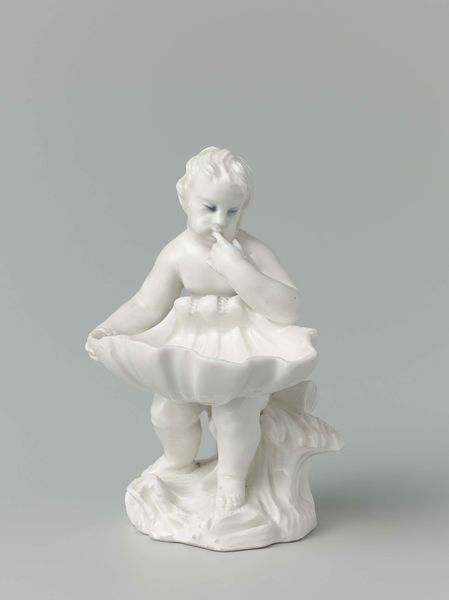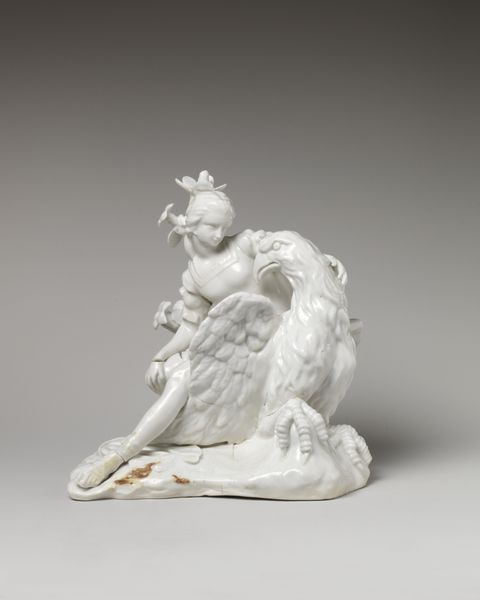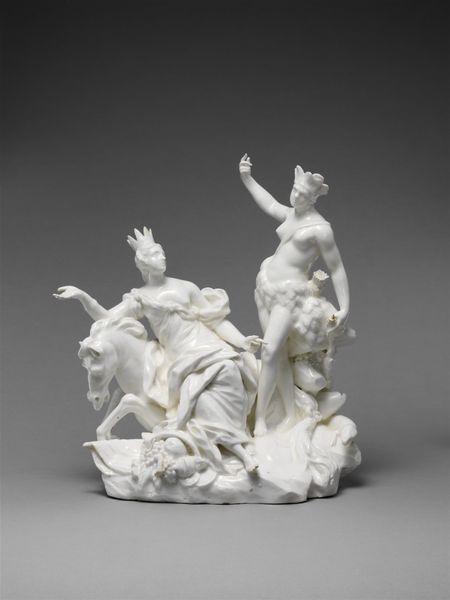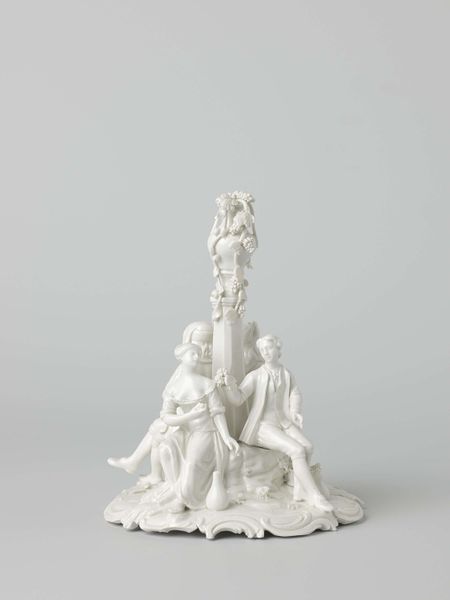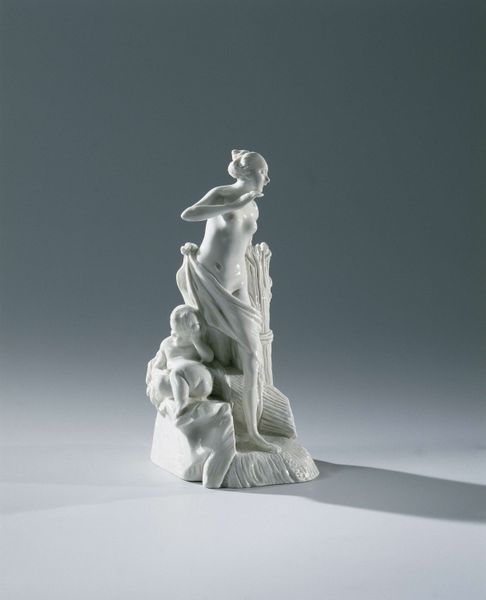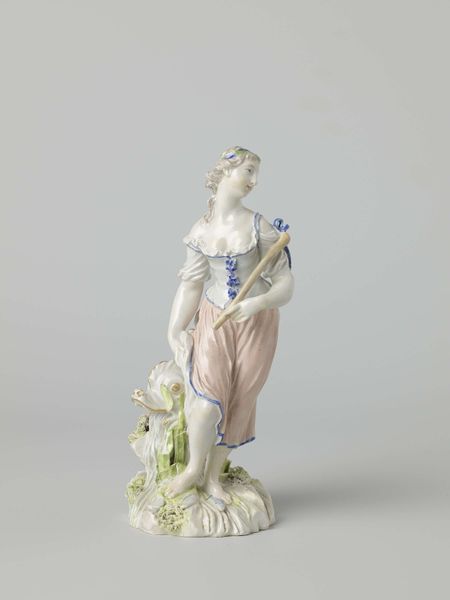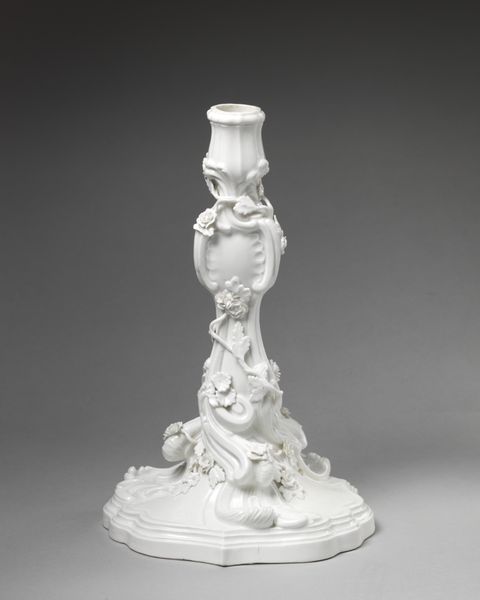
porcelain, sculpture
#
narrative-art
#
porcelain
#
figuration
#
sculpture
#
genre-painting
#
rococo
Dimensions: height 24 cm, width 14 cm, depth 12.5 cm
Copyright: Rijks Museum: Open Domain
Editor: Here we have "Figure of the taking of a shepherdess," a porcelain sculpture from around 1755-1780, currently housed at the Rijksmuseum. The all-white porcelain gives it a delicate, almost ghostly quality. I’m struck by the...the dynamics between the figures. How do you interpret this work in terms of its social context? Curator: It’s interesting you mention the dynamics. This piece, like many Rococo works, initially presents as a frivolous genre scene. But let's consider the power dynamics it portrays. We see a shepherdess being, well, "taken." The question we must ask ourselves is: taken by whom and under what circumstances? Is this abduction a metaphor? Does it reflect broader societal anxieties around class, gender, and even consent? What stories were these porcelains actually telling, or rather, obscuring? Editor: I hadn't thought of it that way. I focused more on the apparent delicacy and supposed elegance. So, are you saying that this piece might be commenting on, or even critiquing, the social norms of the time? Curator: Exactly! By portraying a scene of abduction within a decorative object, it almost normalizes such behaviour, while subtly revealing an imbalance of power. The aristocracy would have been consuming this image, perhaps even subconsciously acknowledging or overlooking such issues. Could this also be viewed in light of the colonial exploitation occurring simultaneously? What does pastoral fantasy mask, if anything? Editor: Wow, that’s a perspective shift! I see so much more complexity now than just a pretty scene. It's a reflection on exploitation normalized. Curator: Precisely. And by grappling with those complexities, we avoid perpetuating the very power imbalances the piece might reflect. It also forces us to reflect: in today's art landscape, whose stories are not being told? Editor: It does give a new critical eye in evaluating these kinds of sculptures and artworks. I appreciate you highlighting these elements, thanks!
Comments
No comments
Be the first to comment and join the conversation on the ultimate creative platform.


